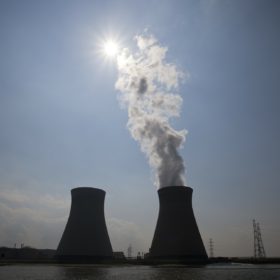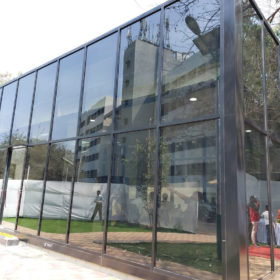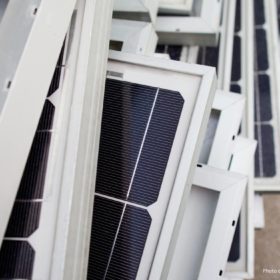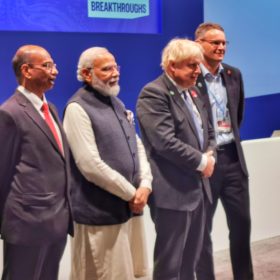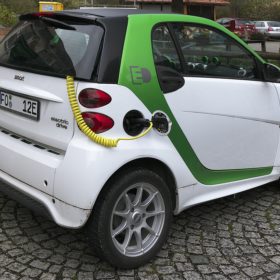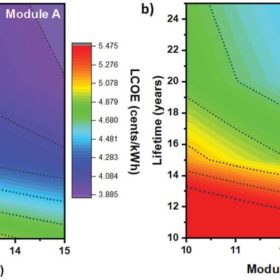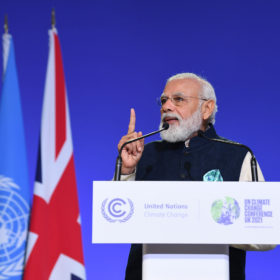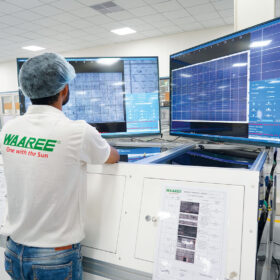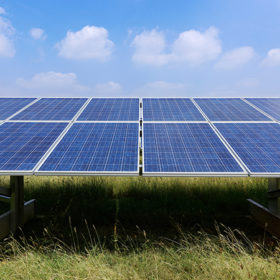Reversing the crisis of climate change
We all should envisage a society in which everyone, including individuals and businesses, operate carbon neutrally, i.e., all entities reduce their carbon footprint by adopting sustainable practices.
International Solar Alliance forms advisory committee to mobilize US$1 trillion solar investment
The advisory committee will guide the International Solar Alliance on meeting its objective of mobilizing US$ 1 trillion investment in solar energy by 2030. Committee members include representatives from leading institutional investor like Africa50, CDPQ Global, IFC, the Development Bank of Southern Africa, Capricorn Investment Group, and Temasek.
Dispute resolution committee to look into commissioning extension for solar projects due before April
The ministry of New and Renewable Energy has empowered the Dispute Resolution Committee to look into commissioning extension requests for solar projects that are due for delivery before April 1 next year.
Moving from energy-efficient buildings to energy-generating buildings
To achieve the government’s ambitious renewable energy targets, and integrate the two growing sectors of infrastructure and construction and renewable energy, the existing policies and codes for green buildings need to be further enhanced. Most of these rules need to include specific details about energy generation. Right now, these are more to do with energy efficiency.
End-of-life management of solar PV waste in India
A new study proposes an ‘extended producer responsibility’ based regulatory framework for end-of-life (EOL) solar PV management in India. Under the framework, the Government of India (GoI) works as the nodal agency, defining the roles and responsibilities of different stakeholders and regulating the overall supply chain. The onus of EOL solar PV take-back, transportation, storage, recovery, and destruction lies on the manufacturers, with the entire system cost borne by an executive committee formed by the manufacturers.
World’s first transnational solar power grid network launched in Glasgow
The India and UK-led global supergrid program seeks to connect 140 countries to round-the-clock green and renewable power.
IndianOil to install EV charging facilities at 10,000 fuel stations
The oil and gas major, with a current installed base of 448 EV charging stations and 30 battery swapping stations, plans to expand the charging station network in a phased manner over the next three years. The first phase will focus on nine cities, including Mumbai, Delhi, Bangalore, Hyderabad, Ahmedabad, Chennai, Kolkata, Surat, and Pune.
Cleantech Solar to help Siemens cut carbon footprint
The ‘captive mode’ solar plant installed by Cleantech Solar shall power Siemens’ manufacturing facility located at Kalwa in Maharashtra.
Analyzing the opportunity for perovskite solar module production in India
Scientists in India conducted a techno-economic analysis for a 100 MW production line for carbon-electrode perovskite solar modules, located in Himachal Pradesh, India. The analysis concludes that, even at the smaller scale, this emerging technology could achieve cost levels comparable with today’s silicon solar products.
India commits to net-zero by 2070
At COP26 Summit in Glasgow, prime minister Narendra Modi also announced India’s pledge to increase its non-fossil energy capacity to 500 GW by 2030. The nation would also increase renewable energy’s share in its overall energy generation mix to 50% by 2030.
